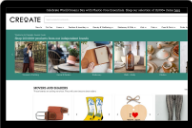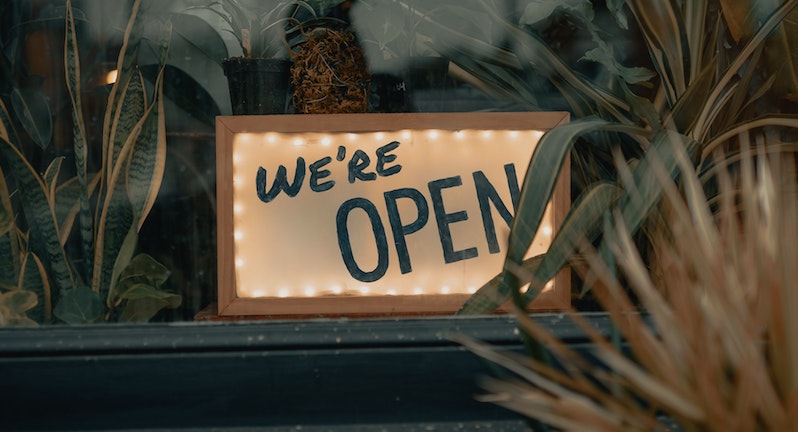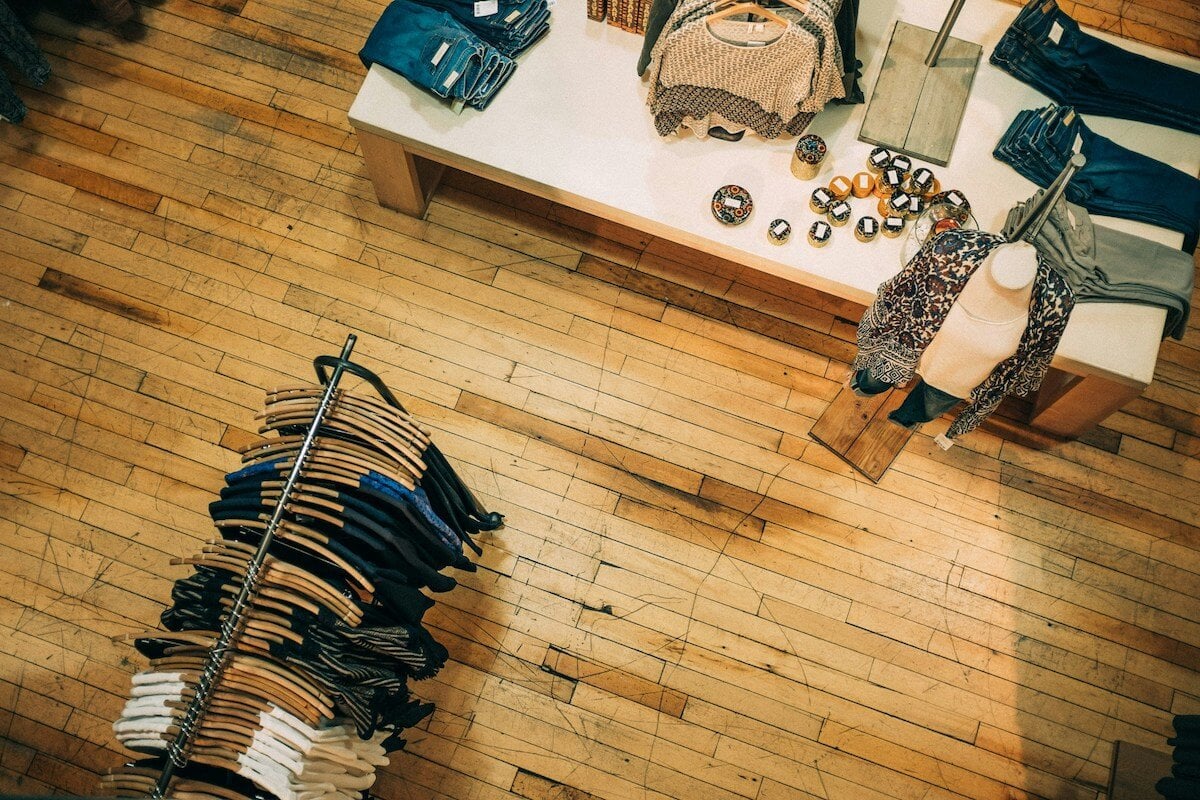Trends come and go, but your store’s identity and personality never fades. A tricky balance between wanting to keep up to date with what’s in style within the industry, in terms of customer service, products, and technology, but also stay true to the core of your business, trends have been a topic of conversation as long as retail has excited. So while we have questions, we also have answers.
As part of our virtual trade show taking place last month, we brought together a power panel of five guests from the retail industry, ranging from small business consultants to hands-on makers. The eye-opening discussion covered everything from commerce to candles as we listened in on the first-hand experiences of what the retail and wholesale industry looks like in real time. Let’s dive into their stories, trials, and tribulations, and lessons learned as a result.
Which products and categories are trending right now?
CREOATE carries more than 300 product categories, with everything from kids toys to kitchenware and greenery to glasses. Thankfully, Alice, our senior brand partnerships manager, analyzes the trends among these so you don’t have to. By volume, our top selling products from our wide collection of artisan and handmade goods have been:
While some of these are vestiges of the Christmas season, others, Alice believes, are testament to a greater, macro-trend being seen within consumer goods. As we spend more time at home, amongst the comfort of their loved ones and with the freedom to define and build our own space, we want to make it as comfortable as possible. This can come in the form of baking, blankets, or, you guessed it, products like candles that invite warm aromas inside, making tough circumstances just a little bit more enjoyable.
Hannah of Home County Candle Co., which creates luxury home fragrance products, says that with remote work, suddenly, you have people burning a candle all day rather than just a few hours. “It’s definitely that feeling of making your home a sanctuary and I think people will still look after themselves in that way post-pandemic,” Hannah said.
This idea feeds into the category trend of self-care items, whether it be healing crystals or yoga mats. Jack from Paper Plane Designs has noticed that with people being isolated, and fed up because of it, self purchases of luxury items have skyrocketed.
“We saw that with skincare, people want to pamper themselves, and I’m sure with any home interiors as well, people want nice things around them in their house,” Jack said. “I think that’s a trend that will continue, because once you’ve got used to that, it’s hard to start accepting less for yourself.”
How can this translate into any business?
But what does all this mean? Do you need to ditch your entire business model to shift into greeting cards and candles? No. Trends in retail also come in the form of categories and product attributes. Therese, founder of Small Business Collaborative, says that even if you don’t consider your brand trend-led, it’s important to at least follow what’s on trend to know what retailers are likely to be looking for, whether it be themes like sustainability, or certain colours, designs or packaging.
“You can lean into trends without being a product that is typically a part of that trend,” Therese said. “Even if you’re not selling candles, sticking with products that follow that theme of mindfulness or pair well with a popular product. And I think that’s how you can get your products into retailers that are out of the box.”
Jack is testament to this, as he wanted to tap into the popularity of bath products and test the waters, so to speak. He figured that his business, originally focused on greeting cards, could translate some of the things we’ve learned from designing cards into designing packaging for skincare and body creams, soaps, and lotions. Natural, vegan, and biodegradable products seemed to be something both customers and Paper Plane were becoming more aware of, so once they put their personal twist on it, the goods flew off the virtual shelves.
“We felt we could do them in a way that was slightly different,” Jack said. “Bath products typically have a more earthy, natural feel to them, so we thought we could add some colour and humour to them. It really seems to have taken off and tapped into the fact that people have become very conscious of the damage single-use plastics and chemicals can cause.”
What’s becoming popular in terms of retail behaviours and experiences?
Trends also shift not just in terms of what people buy, but how they buy and what they’re expecting from the shopping experience. For Jae from Shop Michella, variety is key, as customers can now see how many options are out there with the rise of social media and ecommerce, and are demanding more products, lines, colours, and styles as a result.
Another major thread weaved through all of our panel’s statements was a resounding desire for locally-sourced products — and the reasoning is two-pronged. First, on the more practical side, with shipping costs and delays due to factors like the pandemic and Brexit, stocking products made locally becomes quicker, cheaper, and even more sustainable, as the carbon footprint is smaller without having to fly goods in from across the ocean.
“People are definitely as aware of things being eco-friendly as they are being local,” Jack says. Local works on a lot of different levels, from being made in the UK or even being local to your own county. People even want to stock things made by extremely local makers in their town or village.”
Second, locally-sourced products often come with a story. Thus, apart from range, Therese said, the easiest way to set your shop apart is to carry brands with human interest and heart behind them.
“I do think that there are reasons why it’s so important for retailers to have smaller brands and brands with stories,” Therese said. “Because they need to give their customers a reason to come in-store versus online. So they need brands that start conversations to set themselves apart”
Retailers need to give that extra oomph to their in-store experience to remain competitive with online convenience, so having top notch customer service and brands can make all the difference when it comes to enjoying a stroll through a brick and mortar. Accelerated by the pandemic, customers are more willing to “pay a premium for the experience, quality, and for the story and values of the brands that they’re buying,” Therese noted.
When should you pay attention to trends, and when should you go against the grain?
Over the past two years, we’ve seen trends come and go. While some products are temporary trends that go viral over social media, others, like sustainability, are intended for the long-term. Alice says that as a brand, if you have the capacity, it’s good to test out, but be picky in asking yourself if a specific trend actually resonates with your customer. Most importantly, “understand when you can keep going with a trend and when to let it go,” she says.
For Jack, this has been extra prevalent, as he becomes hyper-aware of greeting card trends through social media. Seeing things like flamingos, pineapples, pugs, unicorns, or marble, he has to be selective in choosing what designs would tie in with his brand, versus ones that would have to be awkwardly shoehorned in just to attempt to align with the customer.
“It’s fine to follow trends, that’s where sales are, and if you get in early, even better. But if there’s a trend that is established, you shouldn’t just do it for the sake of it, or you risk melting into the background. Even better, if you have a good idea but it’s off-trend, go for it, not everyone wants to buy what everyone else has.”
On the opposite end, Hannah follows the idea of having an on-trend product, but pitching it in its own, unique way, as each of her candles are based on a different county around the UK and have their scent built to evoke the sense of being there. With strong execution and leaning into being different, Hannah states, it has worked to her business’s advantage and paid dividends.
“It can make retailers nervous to begin with,” Hannah notes. “But as soon as they realise going against the grain catches people’s eye on a shelf, as soon as they see a Hertfordshire-scented candle on a shelf, they’ll think, oh my god I have to smell that.”
Jae adds that for him, tracking what’s trending means following the market to see where it’s headed, and discovering new marketplaces, like CREOATE, and opportunities to showcase your products to retailers. “Finding CREOATE is something that I’m really thankful for, because I think it’s another trend that the fashion industry will follow,” Jae said.
What’s something that recently surprised you in retail?
As shops and trade shows closed their doors amid the virus, our panellists discuss how they’ve been happily surprised by sellers embracing the emergence of the online marketplace.
“For me, tracking what’s trending is to follow up with the market and see where it’s going and discovering a new marketplace, like CREOATE, as well as other opportunities to showcase your products to retailers,” Jae said. “Finding Creoate is something that I’m really thankful for, because I think it’s another trend that the fashion industry will follow.”
For Jack, he felt that for the longest time, the trade show was king, and if you weren’t at them, you couldn’t be successful. Now, the tide has shifted. After many businesses dipped their toe in the ecommerce wholesale waters for the first time due to the pandemic, they’re sticking with it because it’s worked for them.
“In the past trade shows were a haven for reps and agents doing deals and getting the same product spread out into hundreds of stores across the country,” Jack adds. “And that’s why CREOATE is perfect for the small independent retailers who want something different from everyone else, as they know exactly who they’re buying for and what will fit well in their shop. They’ve got thousands of products they can browse and order in smaller quantities than they would have to with a big wholesaler.”
The final word? Keep an eye on trends, but use them wisely. Stay true to your brand story and let what’s popular inform you, but not control you. Share with us below a moment you’ve had to weigh when to follow the retail flock versus go against it, or a trend you see emerging on the horizon.
Thank you to all of our panellists for your incredible insights, as well as all the guests who joined us for this discussion. See you next time!
Not registered with CREOATE yet? Sign up now and start shopping wholesale with us today.
Read more articles:
Browse Popular Categories at CREOATE: Wholesale Jewellery | Wholesale Gifts | Wholesale Stationery | Wholesale Beauty Products | Wholesale Mugs | Wholesale Homeware | Wholesale Pet Supplies | Wholesale Gourmet Food | Wholesale Garden & Outdoor | Wholesale Baby & Kids Products
Browse Trending Collections on CREOATE: Wholesale Halloween | Wholesale Mother's Day Gifts | Wholesale Father's Day Gifts | Wholesale Valentine's Day Gifts | Wholesale Spiritual Supplies
>> View all








